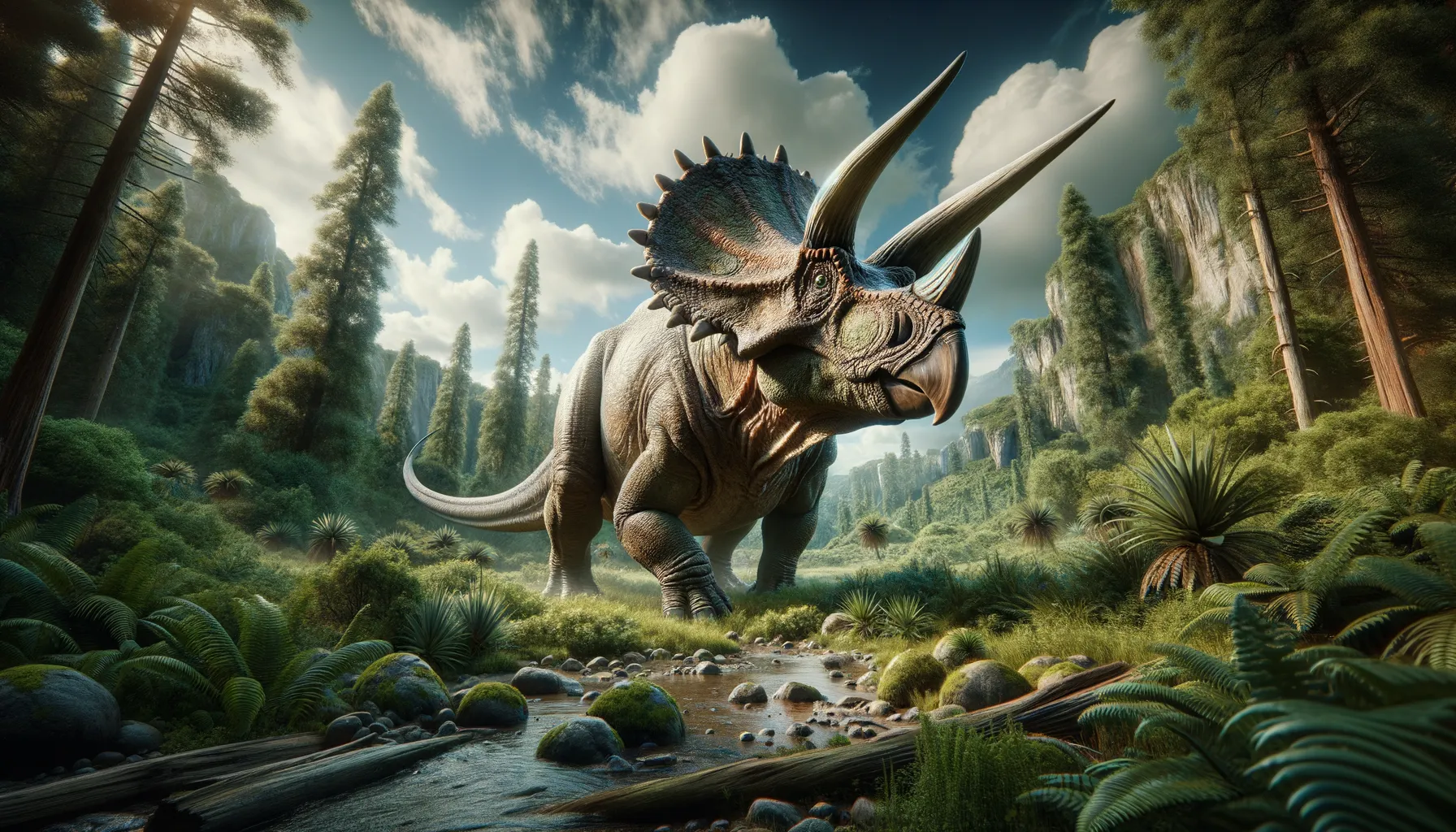
Titanoceratops
Majestic giant of the Cretaceous plains.
Period
Cretaceous
Length
Around 25 feet long.
Height
About 12 feet at the shoulder.
Weight
Approximately 6 to 9 tons.
Titanoceratops was a massive horned dinosaur believed to be one of the largest ceratopsians to roam North America during the late Cretaceous period. With its enormous frill and sharp horns, it was a striking figure of prehistoric times. Known for its heavily built body and weight, this herbivore spent its days foraging through the lush landscapes of what is now the southwestern United States.
Diet
Titanoceratops was a herbivore, primarily feeding on the abundant plant life of its environment. It consumed a variety of vegetation, utilizing its sharp beak to clip leaves and stems effectively.
Hunting
As it was a herbivore, Titanoceratops did not hunt but instead browsed for plants. It relied on its size and horns to deter predators rather than engaging in hunting activities.
Environmental challenges
Titanoceratops lived in a time of significant environmental changes, including periods of drought and varying temperatures. These conditions created challenges for finding food and water, requiring adaptive strategies for survival. Additionally, they faced competition from other herbivores for limited resources, which would have influenced their migratory patterns.
Speed
Slow-moving, due to its large size.
Lifespan
Estimated to live around 70 years.
First discovery
Discovered in New Mexico in 2011.
Fun Facts
- Titanoceratops was a massive horned dinosaur that lived around 74 million years ago during the Late Cretaceous period.
- This dinosaur is believed to be an ancestor of the more famous Triceratops, sharing similar physical features like the large frill and horns on its head.
- Despite its large frill and intimidating horns, Titanoceratops was a herbivore that primarily feasted on vegetation.
- Titanoceratops could measure up to 30 feet long and weigh as much as 6 tons, making it one of the largest horned dinosaurs of its time.
- The name Titanoceratops means 'titanic horned face', a fitting description for this enormous creature.
- Titanoceratops lived in what is now the southwestern United States, with fossils discovered in New Mexico.
- The discovery of Titanoceratops in 2011 helped paleontologists understand the evolution and diversity of horned dinosaurs.
Growth and Development
Titanoceratops likely experienced rapid growth in its early years, reaching a substantial size to avoid predation. Juveniles may have stayed within the safety of the herd to increase their survival chances. As they matured, they developed distinguishing features such as longer horns and a more pronounced frill.
Habitat
Titanoceratops inhabited floodplain environments rich in vegetation, which provided ample food. These areas were likely characterized by seasonal rains, creating lush periods interspersed with dry stretches. The habitat offered a mix of open spaces for grazing and denser forested areas for shelter from extreme weather.
Interaction with other species
Titanoceratops likely coexisted with a variety of other dinosaur species, including predators like the Tyrannosaurus. While they generally lived peacefully with other herbivores, competition for food could lead to occasional confrontations. Their intimidating appearance and herd behaviors were crucial for deterring predators.
Natural lifespan
Naturally, they could live up to 70 years.
Reproduction
Titanoceratops likely engaged in courtship behaviors involving their impressive frills and horns. Nests were probably constructed in safe, secluded areas where the eggs could be protected from predators. Parental care was likely minimal, with young dinosaurs having to fend for themselves soon after hatching.
Social behaviour
Titanoceratops is believed to have been social, living in large herds that offered protection. The herd dynamics could have included cooperative care of young and communal defense strategies against threats. This social structure was crucial for survival in a landscape full of large predators.
Fossil locations
Fossils of Titanoceratops have been predominantly found in the southwestern United States, particularly in New Mexico. These findings have provided significant insights into the dinosaur's habitat and lifestyle. The fossil record has helped paleontologists better understand the diversity of ceratopsian dinosaurs in North America.
